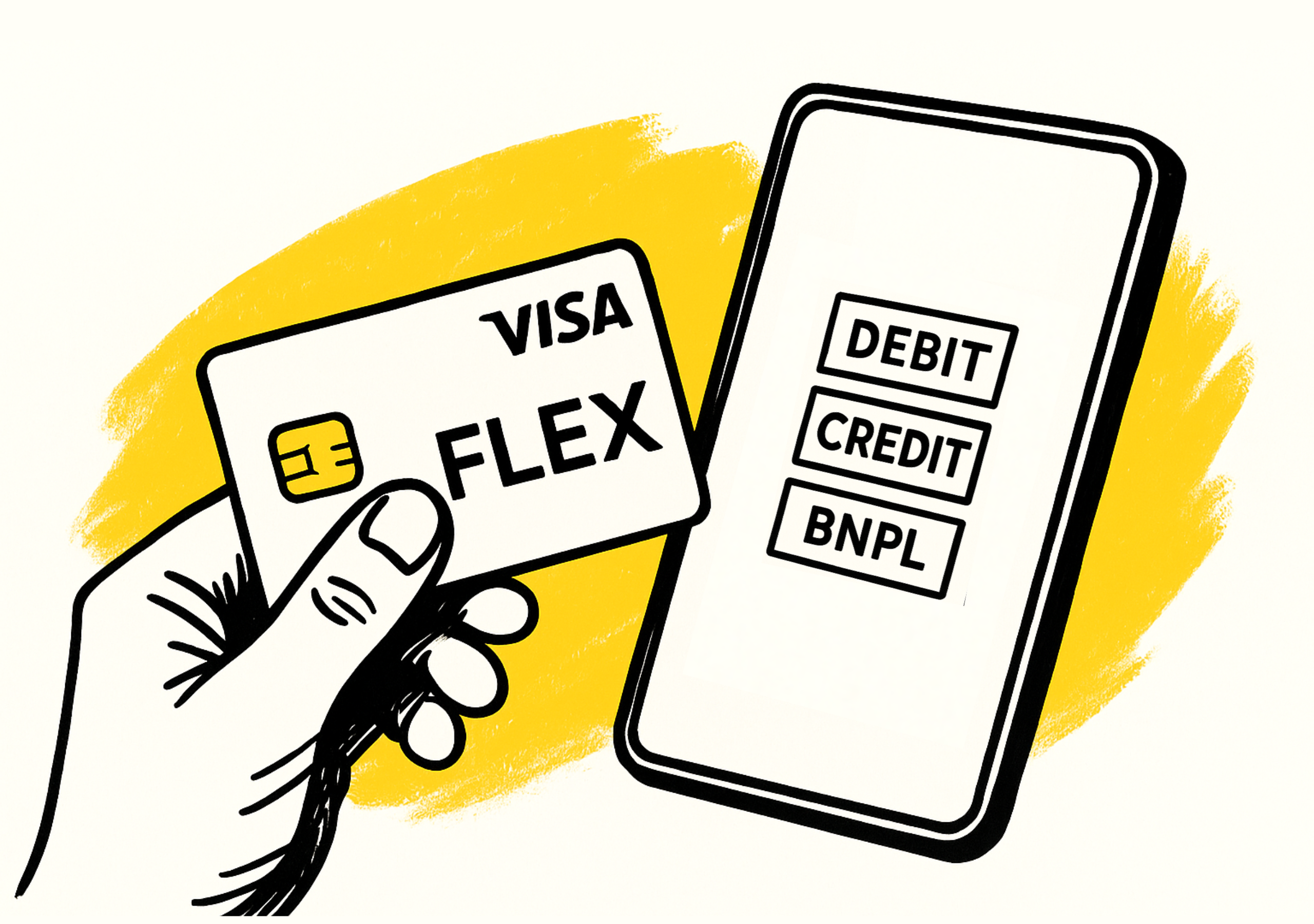There’s been a major shift happening in payments; and it’s not another crypto thing.
Instead, it’s something deceptively simple: letting people choose how they want to pay, with one card. Not five cards, not two apps; just one Visa card inside your banking app, and a tap of a button to switch between debit, credit, or even “pay later.”
That’s the idea behind Visa Flex (or Visa Flexible Credential, if you like long names). And it’s not just a concept anymore. It’s live, growing fast, and yes, quietly reshaping how banks think about card issuing.
So… what is Visa Flex, really?
At its core, Visa Flex is one card that can behave like many.
Let’s say you’re shopping. You open your bank’s app, and right before paying, you choose:
- Debit
- Credit
- Installments (BNPL)
- Loyalty points or even a specific wallet balance
And then you pay — same Visa card, same tap. No switching plastic. No new card numbers.
It’s all happening inside the banking app, powered by the backend systems the bank uses. One of the key enablers behind the scenes is OpenWay’s Way4 platform, which helps banks issue and process these multi-functional cards in real time.
The card stays the same. The funding source is up to you.
Where is this actually live?
Let’s start in Asia, where adoption has been fastest:
- Japan: SMBC’s “Olive” card launched in 2023. It’s a Visa Flex product — and in under a year, 5 million people were using it. Many actively switch between debit and credit in-app.
Fun fact: Olive users spend 40% more than average cardholders. - Vietnam: In 2025, Asia Commercial Bank (ACB) rolled out Visa Flex in their “ACB One” app — the first in Southeast Asia. It’s live, real, and built on Way4. VIB and VPBank are following suit.
Elsewhere, Visa is working with fintechs to push this globally:
- US: The Affirm Card (Visa debit with BNPL in-app) is evolving into a Visa Flex product. Klarna’s also joining in with a pilot Flex card.
- UAE: Emirates NBD’s digital bank, Liv, uses Visa Flex for a multi-currency setup. One card, multiple currency accounts — no FX drama.
It’s no longer a “future of payments” thing. It’s here. And it’s being used.
Why do banks care?
Short answer? More engagement. More revenue.
Longer answer:
- Card usage goes up. People use flexible cards more often. Olive in Japan proves this with +40% average spend.
- Fewer dormant accounts. One good card beats three unused ones.
- Better data. When you give users flexibility, they engage more — and every transaction adds context. Great for personalization.
- Revenue streams multiply. BNPL, FX, loyalty — all routes to monetization beyond swipe fees.
For banks, it’s about keeping their card in the customer’s hand — and their app front of mind.
“Visa Flex Credential truly speaks for itself — it lets customers choose from a wide range of tailored offers, while keeping spending for each card clear, independent, and easy to manage.”
— Mr. Nguyen Tam Khoa, Deputy Head of Consumer Division, ACB
Key takeaways for fintech startups
This shift is more than just cool card tech. It’s a mindset shift around how people interact with money tools.
- One card ≠ one account anymore. Users want flexibility. If you’re building a wallet or app, think dynamic funding options.
- BNPL and FX are no longer standalone products. They’re features inside broader, flexible experiences.
- Your backend matters. Platforms like Way4 let you offer debit, credit, prepaid, or loyalty under one system. That’s a big unlock.
- Data is the new moat. Flex models generate better behavioral data. Use it well, and you win.
- It’s not about bells and whistles. It’s about giving users control — in a way that’s seamless and boringly reliable.
If you’re a fintech founder with a story to share or lessons to offer, we’d love to hear from you. Reach out to us to explore how we can tell your startup’s story.









